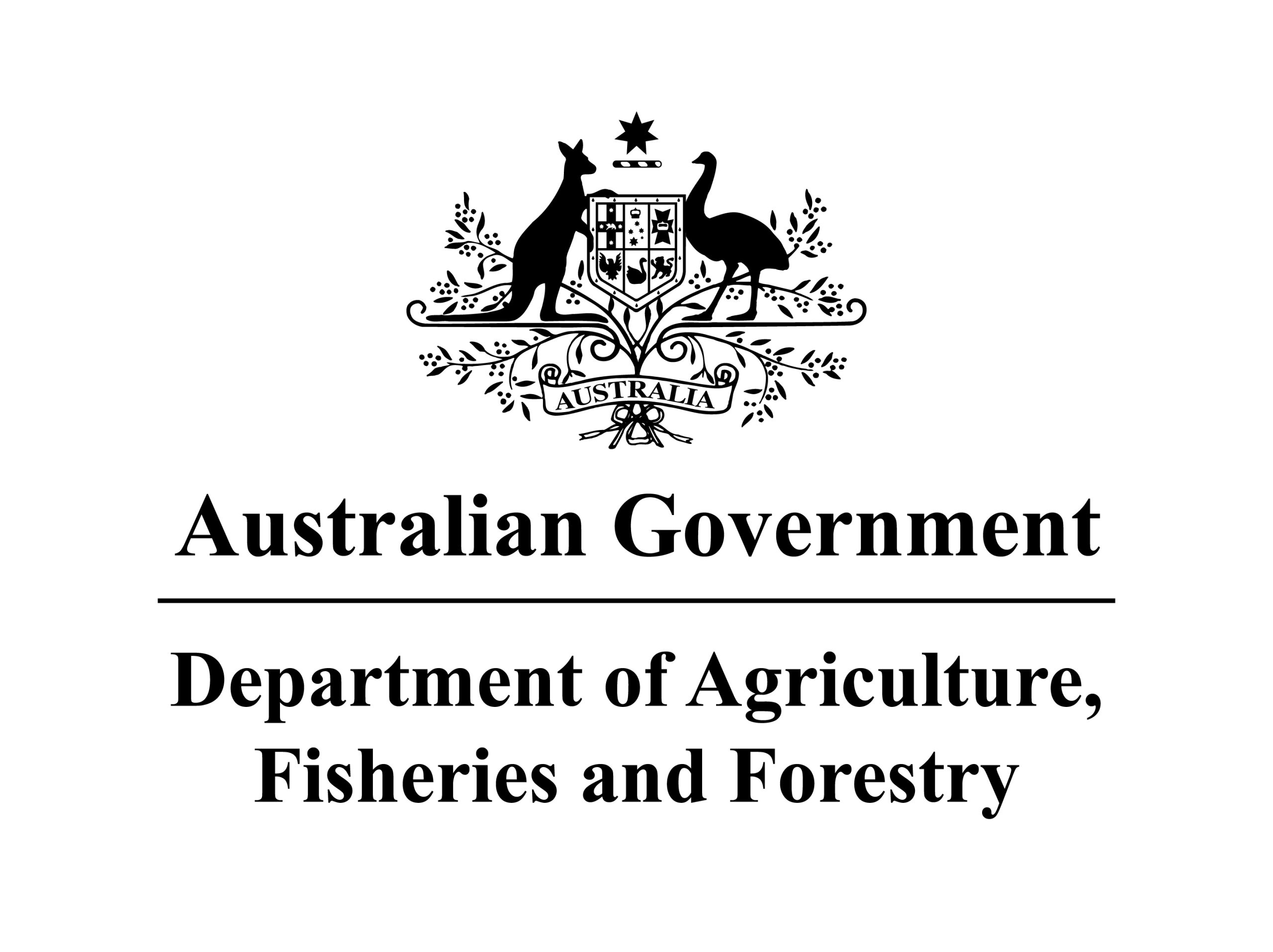PROJECTS
Alleviating Compounding Flocking Fears Avian Influenza and Migratory Birds (2025-27).
Collaborators on this project are The University of Melbourne, AgriFutures, Queensland Department of Agriculture, Wildlife Health Australia and the Australian Chicken Meat Federation. The project will produce an AADIS-HPAI model of the potential spread and control of the H5N1 subtype in the Australian poultry sector.
Epidemiological modelling to better understand potential welfare issues on pig premises during an ASF response (2025-26).
Collaborators on this project are The University of Melbourne, Australian Pork Ltd, SunPork Group, Queensland Department of Agriculture and Rivalea Australia.
Assessing the risk of emergence, transmission and establishment of the Japanese Encephalitis virus in the United States (2024-26).
Collaborators on this project are The University of Melbourne, Kansas State University, University of Georgia, and the US Department of Agriculture.
Models to inform foot-and-mouth disease management in wild host populations in NSW (2024-28)
The NSW Department of Primary Industries have funded a project to better understand transmission dynamics of FMD in wild populations and spillover transmission between livestock and feral pigs. While the focus will be FMD in feral pigs, the project will develop methodologies that can extend to other diseases and other wild host populations (such as feral deer and feral goats). Collaborators on this project are The University of Melbourne, NSW DPI, and the Department of Agriculture, Fisheries and Forestry.
Website: https://www.dpi.nsw.gov.au/animals-and-livestock/beef-cattle/health-and-disease/viral-diseases/fmd
Assessing the potential role of feral pigs in an outbreak of foot-and-mouth disease in Australia (2023-25)
CEBRA Project 23F extended the AADIS FMD model (Bradhurst et al., 2015) to simulate outbreaks of FMD in the feral pig population and potential spillover transmission between livestock and feral pigs. Collaborators on this project were the Department of Agriculture, Fisheries and Forestry, CEBRA, NSW DPI, Biosecurity Queensland, Agriculture Victoria, and SunPork.
Website: https://cebra.unimelb.edu.au/research/feral-pigs-fmd
Modelling the incursion and spread of hitchhiker and windborne plant pests in Australia (2023-24)
The APPDIS model (Bradhurst et al., 2021) was extended to simulate the incursion, spread, and detection of high-priority grains pests (khapra beetle and the spotted stem borer). Collaborators on this project were the University of Melbourne and the Grains Research Development Corporation (GRDC).
Website: https://grdc.com.au/
Exercise Waterhole (2022-23)
The AADIS lumpy skin disease prototype model was used in an exercise to evaluate Australia’s preparedness to respond to large-scale animal disease outbreaks. Exercise Waterhole used simulated outbreaks of lumpy skin disease in planning scenarios for exercises conducted in 2023.
Website: https://www.agriculture.gov.au/biosecurity-trade/policy/emergency/exercises/exercise-waterhole
Lumpy skin disease (LSD) in domestic cattle (2022-24)
The AADIS model was extended to represent the potential spread and control of LSD in the Australian domestic cattle population. Collaborators on this project were the University of Melbourne, DAFF, Western Australia Department of Primary Industries and Regional Development, and Biosecurity Queensland.
Website: https://www.agriculture.gov.au/biosecurity-trade/pests-diseases-weeds/animal/lumpy-skin-disease
Epidemiological interface between domestic and feral pigs (2022-2024)
University of Melbourne Veterinary School PhD candidate Maddie Oberin is conducting a camera trap study of the interface between domestic and feral pigs in Australia. This project will help determine if feral-domestic pig interactions are occurring and provide potential contact rate estimates for parameterising epidemiological models such as the AADIS ASF model (Bradhurst et al., 2021). Additionally, this study will produce a reproducible method for pork enterprises to self-implement camera trap surveillance. Collaborators on this project are the University of Melbourne Veterinary School, CEBRA, the University of Sydney, Australian Pork Limited, Biosecurity Queensland, NSW DPI, SQ Landscapes, and the SunPork Group.
Presentation: https://feralpigs.com.au/wp-content/uploads/2023/06/National-Feral-Pig-Conference-2023-proceedings-final.pdf
Modelling the potential spread and control of FMD in Canada (2022-23)
The AADIS FMD model (Bradhurst et. al., 2015) is being adapted for Canada by the Canadian Food Inspection Agency – the Canadian version of AADIS is called CanDIS.
Presentation: http://dx.doi.org/10.13140/RG.2.2.27611.85286
Website: https://inspection.canada.ca/animal-health/terrestrial-animals/diseases/reportable/foot-and-mouth-disease/eng/1323993172781/1323993252010
Reasonable worst-case scenario of an FMD outbreak in Victoria (2022)
A ’reasonable worst-case scenario’ is a representation of a challenging yet plausible manifestation of a risk. It is the worst case once the high-impact low-likelihood manifestations of the risk have been discounted. Such scenario modelling is commonly used to assess preparedness for emergency response incidents and in this project, the AADIS FMD model (Bradhurst et. al., 2015) was used by Agriculture Victoria to define a ‘reasonable worst-case scenario’ of an FMD outbreak in Victoria. Collaborators on this project were Agriculture Victoria and CEBRA.
Website: https://agriculture.vic.gov.au/biosecurity/animal-diseases/important-animal-diseases/foot-and-mouth-disease
Predictive modelling of Mycoplasma bovis in New Zealand cattle (2021-22)
The AADIS model was adapted to simulate the spread and surveillance of Mycoplasma bovis to assist the New Zealand Ministry for Primary Industries assess the sensitivity of their background surveillance system. Collaborators on this project were NZ MPI, CEBRA, and the University of Melbourne Veterinary School.
Website: https://www.mpi.govt.nz/biosecurity/mycoplasma-bovis/
Presentation: http://onehealth.org.nz/wp-content/uploads/2023/01/Burroughs-OHA-2022.pdf
Economic impact of FMD outbreaks in Qld and NSW (2022)
The AADIS FMD model (Bradhurst et al., 2015) was used to simulate FMD outbreaks in various locations in Qld and NSW to better understand the potential economic impact. Collaborators on this project were Biosecurity Queensland, Investment NSW, and CEBRA.
Website: https://www.dpi.nsw.gov.au/animals-and-livestock/beef-cattle/health-and-disease/viral-diseases/fmd
Analysis of livestock movements and the benefits and costs of livestock standstills in Australia (2021-22)
The AADIS FMD model (Bradhurst et al., 2015) was used to assess the benefits and costs of a livestock standstill upon detection of an emergency animal disease. Collaborators on this project were the Western Australia Department of Primary Industries and Regional Development and CSIRO.
Project report: https://www.agric.wa.gov.au/sites/gateway/files/DPIRD_CSIRO_NLSScostbenefitanalysis.pdf
Website: https://www.agric.wa.gov.au/livestock-biosecurity/national-livestock-standstill-foot-and-mouth-disease-cost-benefit-analysis
Modelling post-border spread of African swine fever (ASF) on a national scale (2021-22)
Funded under the DAFF Biosecurity Innovation Program, this project extended the ASF model developed for Qld under CEBRA Project 20121501 to a national scale. The new model simulates the spread and control of ASF in, and between, domestic and feral pigs. Collaborators on this project were DAFF, CEBRA, University of Melbourne Veterinary School, Biosecurity Queensland, SunPork Group, and AusVet.
Presentation: https://overview.cebra.unimelb.edu.au/pubs/Bradhurst2022_Modelling-the-spread-and-control-of-African-swine-fever.pdf
Project report: http://hdl.handle.net/11343/331624
Website: https://www.agriculture.gov.au/biosecurity-trade/pests-diseases-weeds/animal/asf
Model-based estimation of the impact on rotavirus disease of RV3-BB vaccine administered in a neonatal or infant schedule (2018-22)
The AADIS modelling framework was extended to simulate the spread of Rotavirus in the Indonesian province of Klaten in order to compare neonatal vs infant vaccine schedules. Collaborators on this project were the Murdoch Children’s Research Institute, the Peter Doherty Institute for Infection and Immunity, and the University of Melbourne.
Publication: Geard et al., 2022
Presentation: https://www.sabin.org/app/uploads/2023/04/Vicka-Oktaria.pdf
African swine fever (ASF) in domestic & feral pigs (2020-21)
CEBRA project 20121501 extended the AADIS model to represent the spread of ASF in the feral pig population and between the feral and domestic pig populations. Collaborators on this project were DAFF, CEBRA, University of Melbourne Veterinary School, Biosecurity Queensland, and AusVet.
Project report: http://hdl.handle.net/11343/292079
Website: https://www.agriculture.gov.au/biosecurity-trade/pests-diseases-weeds/animal/asf
African swine fever (ASF) in domestic pigs (2020-21)
The Biosecurity Innovation Program within the Department of Agriculture, Fisheries and Forestry (DAFF) sponsored the adaption of AADIS to model the spread and control of ASF in the Australian domestic pig population. Collaborators on this project were DAFF, CEBRA, University of Melbourne Veterinary School, Biosecurity Queensland, Australian Pork Limited, and SunPork.
Website: https://www.agriculture.gov.au/biosecurity-trade/pests-diseases-weeds/animal/asf
Media: https://haveyoursay.awe.gov.au/biosecurity-innovation/news_feed/modelling-the-potential-spread-of-african-swine-fever
FMD Ready – outbreak decision support tools (2017-22)
The FMD Ready project enhanced and utilised the AADIS FMD model (Bradhurst et. al., 2015) to assess alternate approaches to post-outbreak surveillance and management options for vaccinated animals to support proof-of-freedom and a faster return to trade. Collaborators on this project were the Department of Agriculture, Fisheries and Forestry, Meat and Livestock Australia, CSIRO, Animal Health Australia, and CEBRA.
Project report: https://www.mla.com.au/contentassets/c4f261d8dfc94aaf94a0dfacabcc6060/p.psh.0779-fmd-ready-project-finalreport-public-.pdf
Website: https://research.csiro.au/fmd/outbreak-decision-support-tools/
Publications: Capon et al., 2021; Garner et al., 2021; Hafi et al., 2022; Seitzinger et al., 2022a; Seitzinger et al., 2022b.
Within-farm spread of African swine fever (2020)
A mathematical model of the within-farm spread of ASF spread was developed as part of Maddie Oberin’s Honours research project. This contributed to the development of the AADIS ASF model (Bradhurst et. al., 2021). Collaborators on this project were the University of Melbourne Veterinary School and CEBRA.
Website: https://twitter.com/DrCodehammer/status/1322024818338799617
Development of a transboundary model of livestock disease in Europe (2019-21)
EuFMDiS (Bradhurst et al., 2021) is a multi-country extension of the AADIS modelling framework for transboundary animal disease in Europe. The development of EuFMDiS was sponsored by the European Commission for the control of FMD (EuFMD) within the Food and Agriculture Organisation of the United Nations.
Collaborators on this project were EuFMD and the national veterinary authorities of Austria, Bulgaria, Croatia, Hungary, Italy, Ireland, North Macedonia, Romania, Slovenia and Spain.
Website: http://www.fao.org/eufmd/global-situation/eufmdis/en/
Publications: Bradhurst et al., 2021; Marschik et al., 2021a; Marschik et al., 2021b; Conrady et al., 2023.
National livestock standstill (2019)
The AADIS FMD model (Bradhurst et al., 2015) was used by Melbourne Veterinary School Master of Veterinary Public Health student Emily Glass for her research project on the effect of a national livestock standstill on the size and duration of an outbreak of FMD in Australia. The collaborators on this project were the University of Melbourne Veterinary School, CEBRA, and the Western Australian Department of Primary Industries and Regional Development.
Website: https://www.agric.wa.gov.au/livestock-biosecurity/foot-and-mouth-disease-recognise-and-report-signs
Cost benefit analysis of the yellow crazy ant eradication program (2019)
The APPDIS model (Bradhurst et al., 2021) was used to simulate the potential spread of yellow crazy ants into World Heritage Areas in Northern Queensland as part of a cost-benefit analysis for the Wet Tropics Management Authority (WTMA). The collaborators on this project were the Wet Tropics Management Authority and the University of Melbourne.
Project report: https://www.wettropics.gov.au/YCA_CBA_Final_2019.pdf
Website: https://www.wettropics.gov.au/our-battle-plan
Developing models for the spread and management of National Priority Plant Pests (2017-19)
CEBRA project 170606 extended the AADIS modelling framework to represent the incursion, spread and control of plant and environmental pests. The new model was called APPDIS (Australian Priority Pest and Disease model) (Bradhurst et al., 2021) and the case studies were an exotic fruit fly (Oriental fruit fly) and an established tramp ant (yellow crazy ant). The collaborators on this project were DAFF and CEBRA.
Project report: https://cebra.unimelb.edu.au/Technical_report_170606_final.pdf
Publications: Bradhurst et al., 2021
FMD surveillance (2018)
The AADIS FMD model (Bradhurst et al., 2015) was used to estimate the return on investment of active surveillance of FMD. The collaborators on this project were the Western Australian Department of Primary Industries and Regional Development, Ausvet, and the University of Melbourne Centre for Environmental and Economic Research (CEER).
Media: https://www.agric.wa.gov.au/newsletters/ftt/fit-trade-march-2018-edition?page=0%2C1
Vector-borne livestock disease (2016-17)
CEBRA project 1608B extended the AADIS modelling framework to represent insect vectors of livestock disease. AADIS was subsequently extended to represent the spread and control of bluetongue virus. The collaborators on these projects were the Department of Agriculture, Fisheries and Forestry, University of Melbourne (Centre of Excellence for Biosecurity Risk Analysis and the Faculty of Veterinary and Agricultural Sciences), the Centre for Epidemiology and Animal Health within the United States Department of Agriculture, and the University of Georgia.
Project report: http://hdl.handle.net/11343/274363
Publications: Al-Riyami 2020
Foot-and-mouth disease post-outbreak management (2016-17)
CEBRA project 1608D extended the AADIS FMD model (Bradhurst et al., 2015) with economic and post-outbreak management components to evaluate surveillance strategies in support of return to trade. The collaborators on these projects were DAFF and CEBRA.
Project report: https://cebra.unimelb.edu.au/1608D-Final-report.pdf
Publications: Bradhurst et al., 2019; Bradhurst et al., 2021
Early Decision Indicators for Foot-and-Mouth Disease Outbreaks in Non-Endemic Countries (2015-16)
CEBRA project 1404D extended and utilised the AADIS FMD model (Bradhurst et al., 2015) to identify metrics available early in an FMD outbreak that might indicate the eventual severity in terms of size, duration and cost. The collaborators on these projects were DAFF, CEBRA, ANU, NZ MPI, and Asure Quality NZ.
Project report: https://cebra.unimelb.edu.au/__data/assets/pdf_file/0005/2615153/1404D_CEBRA_EDI_FMD_master.pdf
Publications: Garner et al., 2016
National-level farm demographic data for preparedness of highly infectious livestock disease epidemics. Review of data sources in
New Zealand, approach to modelling populations and the effect of uncertainty (2014-16)
As part of this project, the AADIS FMD model (Bradhurst et al., 2015) was adapted for New Zealand and used to assess the benefits of modelling with accurate farm population data as opposed as to employing average farm sizes. The collaborators on the project were NZ MPI, CEBRA, DAFF, Massey EpiCentre, and ANU.
Project report: https://cebra.unimelb.edu.au/__data/assets/pdf_file/0020/2615141/1402_1502C_FINALREPORT-2.pdf
Publications: van Andel et al., 2018
Research and development of a national-scale modelling framework for emergency animal diseases (2012-15)
The AADIS modelling framework arose from a PhD project funded by the Australian Department of Agriculture, Fisheries and Forestry. The testcase disease was FMD. The collaborators on the project were DAFF and the University of New England.
Project report: https://hdl.handle.net/1959.11/19661
Publications: Bradhurst et al., 2013; Bradhurst et al., 2015; Bradhurst et al., 2016




